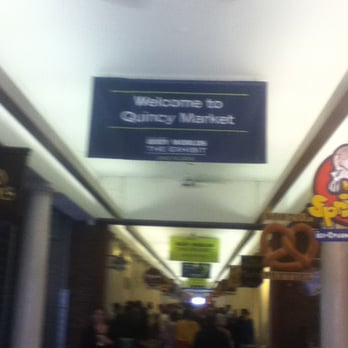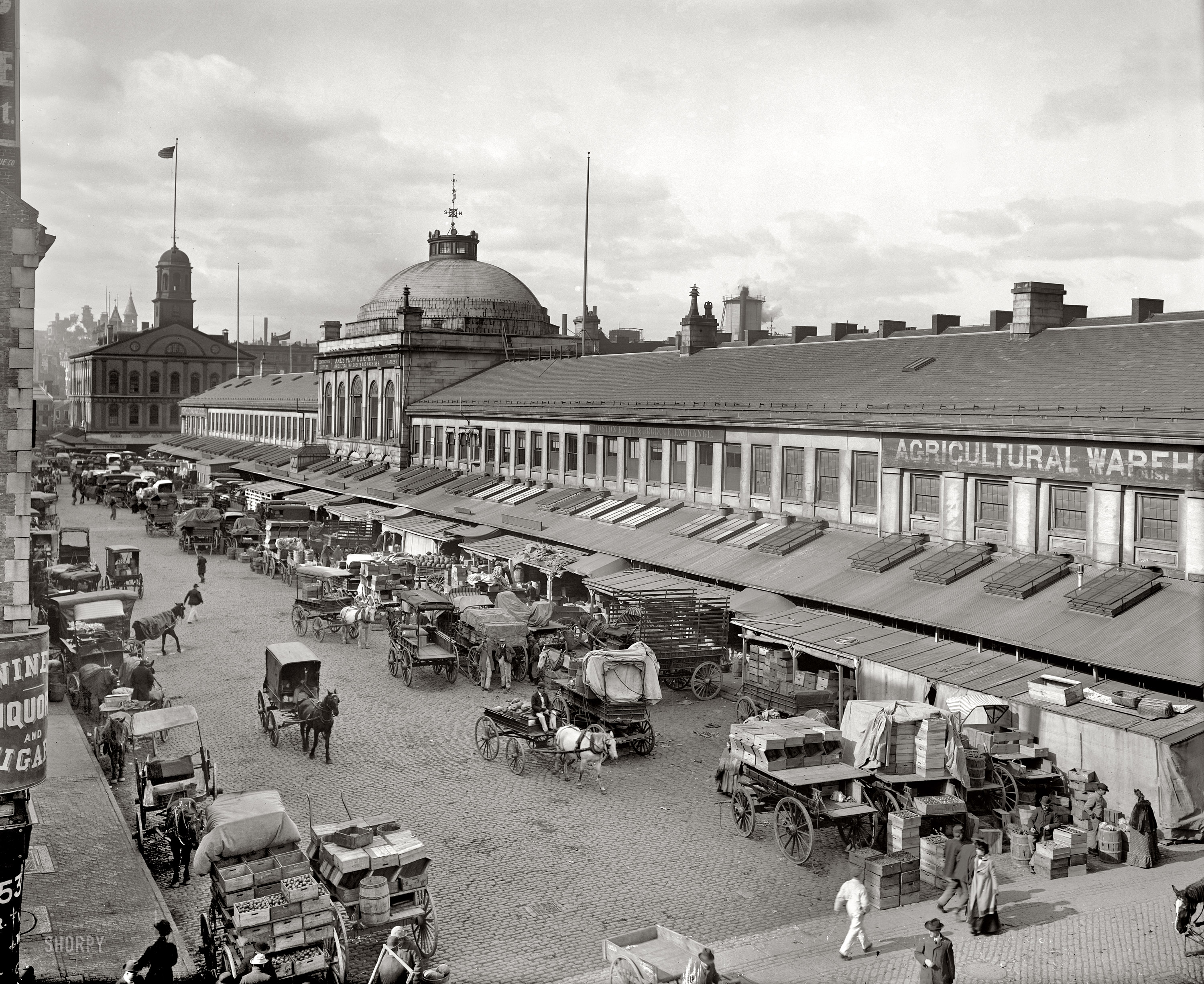

From retail to wholesaleīy mid 19th century, due to the expansion of Boston’s border, people tended to shop near their homes, Quincy market was noticeably turned to wholesale. This explained the different additions happened in late 19th century. As these buildings were privately held, the City Council was more tolerant and the property owners were exempted from certain deed restrictions, particularly about the height of the buildings.

The North and South Market, however, desired enlargement to their structures too. To solve the capacity problem, the ground floor of Faneuil Hall had become market once again in 1858. This was rejected in the end with the help of the City Solicitor to retain Alexander Parris’ original design. Enlargement plans were proposed, including addition of two more stories, and widening the South and North markets so that they are similar to the Quincy Market in the middle. The market continued to serve Boston but it had also reached its maximum capacity during the 1850s. Many Faneuil Hall tenants relocated to the new market The two-story Greek Revival edifice of 535 feet in length and 50 feet in width allowed 128 food stalls on the ground floor and exhibition area on the second floor. The market house opened to the public on August 26, 1826. In 1989, to commemorate Mayor Quincy’s effort with the establishment, gilded “Quincy Market” signs were put on the pediment of both Greek Revival Porticoes. The City Council obliged although the the ornate central chamber of the second-story was named “Quincy Hall”. He thought it’s more appropriate to honour the legacy Peter Faneuil. Naming of the marketĪt the time, suggestions were made to name the new market to Mayor Quincy’s honour though he had refused this at his public speech.

Since then, “Faneuil Hall Market” continued to be the proper name of the market while the public still refers it as Quincy Market. The famous architect and engineer Alexander Parris designed and completed the Quincy Market by August of 1826. On April 27, 1825, Mayor Quincy laid the cornerstone for this important market. If you wonder why the South Market Street is much wider than the North Market Street, it’s because Nathan Spear’s estate was in the way. It all went smoothly until he came across Nathan Spear’s property. The mayor worked very hard to negotiate with property owners to acquire the required land for the development. Instead, he led a new committee with new plans and substantial improvements around the area. Mayor Quincy formed a committee to find a solution to this but he wasn’t happy with the resolution. There were wooden sheds around the hall for more fish and produce market activities. He noticed that the chaos was caused by the fact that the 7,600 square foot market right underneath his office at Faneuil Hall was no longer sufficient to cater for the need of the city. Head to Long Wharf to visit the Aquarium, or catch a boat to Charlestown or even Cape Cod.In May 1823, the newly elected mayor Josiah Quincy was disgusted by the view from his office in Faneuil Hall. Head north from the end of the Common to see the golden dome of the State House, and travel through government center to Quincy Market and Faneuil Hall, both a historic and popular destination worth a quick visit for a first time to Boston. Continue on through the Gardens and take in some open green space at the Boston Common, where you can spend time throwing a frisbee, sitting on a park bench, or, in the winter time, skating on the frog pond. Have your camera ready to capture its peaceful beauty in the middle of a bustling city. Stroll through one of Boston’s most famous green spaces, the Boston Public Gardens, check out and make way for duckling statues, picnic under a beautiful tree overlooking the pond, and walk over the iconic footbridge where, during summer time, you will catch a swan boat toting children and eager tourists through the pond. The largest area of the city, Downtown is rich with historical and iconic sites in Boston.


 0 kommentar(er)
0 kommentar(er)
